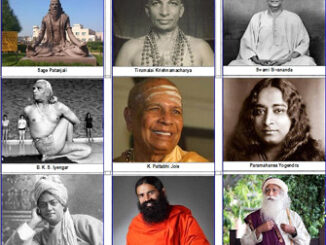
April Fool’s Day, observed on April 1st every year, is a day dedicated to pranks, hoaxes, and playful deception. People across the world indulge in lighthearted jokes, attempting to outwit their friends, family, colleagues, and even the media. Although its precise origins remain uncertain, April Fool’s Day has become a global phenomenon that transcends cultures and generations.
This article explores the historical background, customs, notable pranks, regional variations, and the impact of April Fool’s Day in the modern era. Additionally, we will examine how technology has influenced the way pranks are executed and how businesses and the media have capitalized on the tradition.
Origins of April Fool’s Day
The Gregorian Calendar Theory
One of the most widely accepted theories about the origins of April Fool’s Day stems from the adoption of the Gregorian calendar. In 1582, Pope Gregory XIII replaced the Julian calendar with the Gregorian calendar, shifting New Year’s Day from April 1st to January 1st. Some people, either out of ignorance or resistance to change, continued to celebrate New Year’s on April 1st and were mocked as “April fools.” They were often subjected to pranks and jokes, which may have contributed to the modern tradition of foolery on this day.
Roman and Medieval Festivals
Other theories suggest that April Fool’s Day has ties to ancient Roman and medieval traditions. The Roman festival of Hilaria, celebrated in late March, was a day of joy and mirth where people wore disguises and mocked one another. Similarly, the medieval Feast of Fools, held in early January, involved playful mischief and role reversals, reminiscent of modern April Fool’s customs. These celebrations emphasized inversion of social norms, which could have laid the foundation for the pranking culture seen today.
Chaucer’s Canterbury Tales
Some scholars point to Geoffrey Chaucer’s Canterbury Tales (1392) as a potential reference to April Fool’s Day. In “The Nun’s Priest’s Tale,” a passage suggests a connection between trickery and April 1st, though this may be due to a misinterpretation of the text. Some believe that Chaucer’s wording may have inadvertently led to the association between pranks and April 1st in later centuries.
Traditions and Customs
Personal Pranks
At its core, April Fool’s Day is about tricking people into believing something false, only to reveal the truth with an exclamation of “April Fool!” Common pranks include swapping sugar for salt, setting alarm clocks early, and taping signs to unsuspecting people’s backs. More elaborate pranks may involve fake lottery tickets, staged mishaps, or convincing someone of an outrageous but harmless lie.
Workplace and School Pranks
In professional and educational settings, April Fool’s Day often brings collective participation in pranks. Office workers may tape down a colleague’s mouse sensor, schedule fake meetings, or send humorous fake memos. In schools, teachers and students engage in lighthearted tricks, such as fake pop quizzes, surprise schedule changes, or pretend announcements over the intercom.
Media Hoaxes
Newspapers, radio stations, and television networks have a long history of publishing fake news stories to fool the public. One of the most famous media hoaxes occurred in 1957 when the BBC aired a segment about the Swiss spaghetti harvest, showing farmers picking spaghetti from trees. The prank was so convincing that many viewers called in, asking how they could grow their own spaghetti trees.
Corporate Pranks
Many companies join in on the fun by launching fake product announcements. For instance, Google has a tradition of elaborate pranks, such as announcing a fictional new service like “Google Nose” (a scent-based search engine). Other brands have promoted absurd fake products like self-driving bicycles, edible coffee cups, and even toothpaste with dessert flavors.
Notable April Fool’s Pranks
The Spaghetti Tree Hoax (1957)
The BBC aired a segment on Panorama showing Swiss farmers harvesting spaghetti from trees. Many viewers believed it and even called the station asking how they could grow their own spaghetti trees. This hoax remains one of the most famous media pranks of all time, illustrating the power of television in creating convincing hoaxes.
Taco Liberty Bell (1996)
Taco Bell ran a full-page ad in newspapers claiming it had purchased the Liberty Bell and renamed it the “Taco Liberty Bell.” Outraged citizens called the National Park Service until Taco Bell revealed it was a joke. The prank gained widespread media attention and served as a brilliant marketing strategy for the fast-food chain.
Google’s Many Pranks
Google has been a leader in April Fool’s jokes for years, unveiling absurd yet amusing fake products. In 2013, they introduced “Google Nose,” a service that purportedly allowed users to search for smells online. Other pranks included “Google Translate for Animals” and “Gmail Motion,” a feature that supposedly allowed users to compose emails using body movements.
Left-Handed Whopper (1998)
Burger King advertised a “Left-Handed Whopper,” claiming it was specially designed for left-handed customers. Thousands of people went to restaurants requesting it before realizing the joke. This prank demonstrated how branding and marketing could be seamlessly integrated into April Fool’s hoaxes.
Regional Variations
France and Italy: Poisson d’Avril
In France and Italy, April Fool’s Day is known as Poisson d’Avril (“April Fish”). Children tape paper fish to people’s backs and shout when the prank is discovered. This tradition dates back to the 16th century and is believed to have originated when France switched from the Julian to the Gregorian calendar, similar to the “April Fool” phenomenon elsewhere.
Scotland: Hunt-the-Gowk Day
In Scotland, the tradition extends over two days. The first day, Hunt-the-Gowk Day, involves sending people on pointless errands, while the second day, Taily Day, focuses on pranks related to the backside (e.g., pinning “Kick Me” signs). Scotland’s extended celebration reflects its deep-rooted love for humor and jesting.
India and Iran
In India, April Fool’s Day aligns with the festival of Holi, a time of playful mischief where people throw colored powders and drench each other with water. In Iran, a similar tradition known as Sizdah Bedar occurs on April 1st or 2nd, where people play tricks on each other. These traditions demonstrate that humor and practical jokes are a global phenomenon with diverse cultural expressions.
The Role of Social Media and Technology
In recent years, the internet has transformed April Fool’s Day. Viral memes, fake news articles, and elaborate digital hoaxes spread rapidly across social media platforms, sometimes fooling even the most skeptical users. Companies, influencers, and even governments have used April Fool’s Day as an opportunity to engage with audiences in creative and unexpected ways.
However, the rise of misinformation has also led to discussions about the ethical implications of deceptive content. Some hoaxes have sparked unnecessary panic, while others have led to widespread confusion. As a result, some organizations have opted out of April Fool’s pranks to avoid the risk of misinforming the public.
Ethical Considerations
While April Fool’s pranks are meant to be harmless, they can sometimes cross the line into cruelty or misinformation. Ethical pranking involves ensuring that the joke does not cause harm, embarrassment, or fear. Transparency and good intentions are key to maintaining the spirit of April Fool’s Day. Some organizations have also issued guidelines to ensure pranks remain fun and do not spread harmful false information.





Be the first to comment